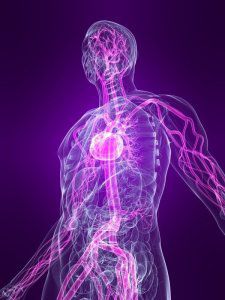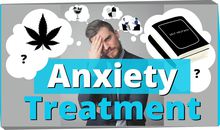What happens in the body when we experience anxiety
Understanding the physical experience of anxiety is fundamental to being able to shift from overwhelmed to enhanced quality of life.
Anxiety is the same physical response that occurs in fear. Fear is a natural emotion which helps us respond when we are under threat. Our bodies respond to fear through our autonomic nervous system, which has two branches, the sympathetic and the parasympathetic (which I will return to later in the piece).
In fear (and anxiety and stress) the sympathetic nervous system is activated, releasing adrenaline and cortisol, the “stress hormones”. Our heart and breathing rates increase, our muscles tense and blood flows away from the central organs, brain, heart, digestion, and towards our limbs. These changes occur to ready our bodies for intense physical exertion.
This process is commonly known as “fight or flight”. Our nervous systems have evolved to produce this response in order to increase our chances of surviving a threatening situation, escaping by fighting our way out or by running away.
Normal fear starts to become unhelpful anxiety when we make inaccurate predictions about threat. In our modern society we no longer live in circumstances where our survival is threatened on a regular basis. Instead we react to threats to our livelihood, threats to our status, threats to our sense of self.
These are not threats which necessarily require a physical response, and yet the flight or fight response is stimulated by the sense of threat. We then experience the consequence of anxiety symptoms; a pounding heart, shortness of breath, muscle tension, digestive upset and poor sleep to name a few.

So what can we do about this?
The good news is that there are plenty of ways to counteract the fight or flight response. Exercise is the activity that the fight or flight response is designed for, and is one way to counteract those unwanted anxiety symptoms. Running, dancing, playing a sport, punching a punch bag (especially if you’re feeling angry too!) are all great ways of working those stress hormones out of your system.
The other branch of the nervous system is the parasympathetic nervous system. This is responsible for “rest and digest”, and promotes healing, digestion and relaxation. Those of us who are experiencing ongoing symptoms of stress and anxiety can learn to stimulate the rest and digest response, thus turning off flight or flight, as the two cannot function at the same time.
Rest and digest is stimulated by pleasurable and relaxing activities like meditating, thinking positive thoughts, having a massage, spending time with friends, family or pets, going for a walk, taking a long hot bath.
At WAS we teach relaxation and breathing techniques, and mindfulness, which will turn off fight or flight and turn on rest and digest.










